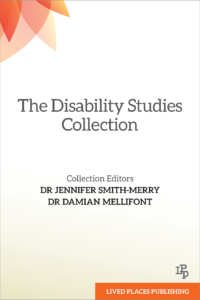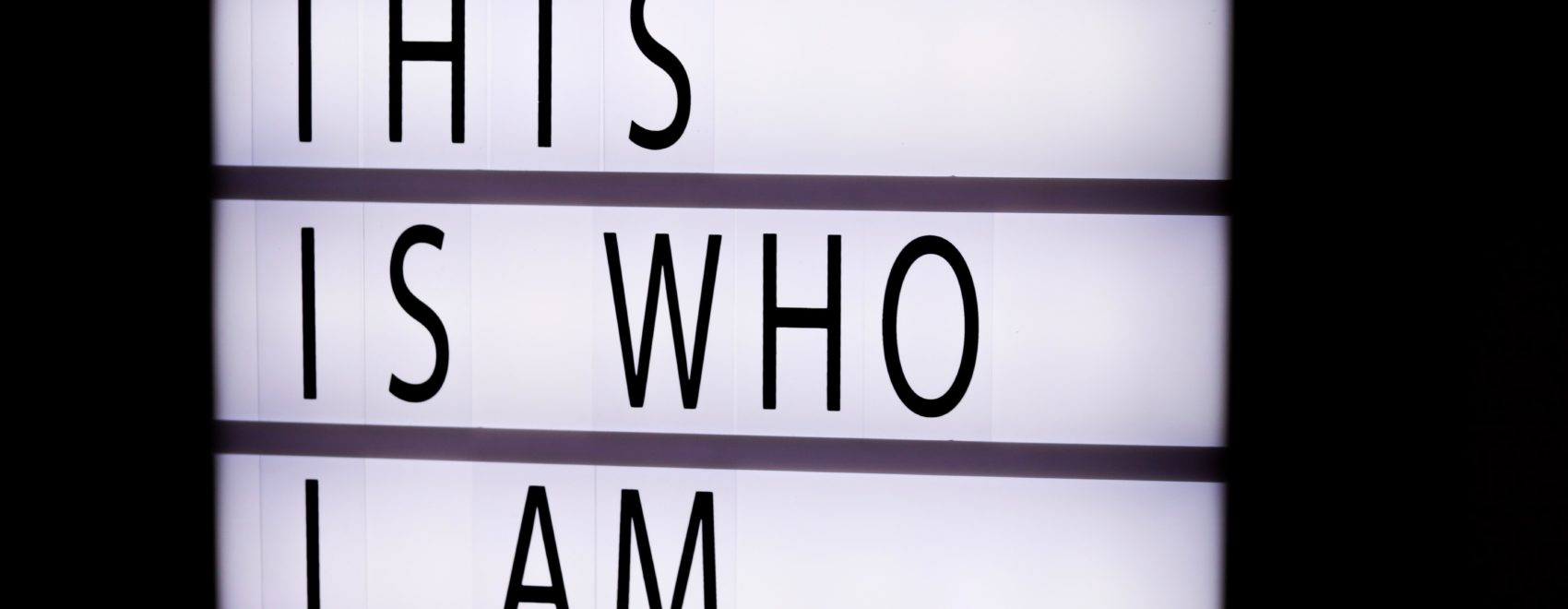Inclusive places encourage diversity of personal choices about identity and the broader use of disability language
By Dr Damian Mellifont and Dr Jennifer Smith-Merry, Collection Editors
As editors for the Lived Places Disability Studies collection, we recognise that much debate persists around how people choose to refer to themselves and also concerning the broader use of disability language. Appreciating that this debate is important, ongoing, and, at times, very passionately and personally argued, we have decided to discuss some of our thoughts.
In Australia, both academics and activists tend to use person-first language to refer to people with disabilities. You can see this identified in the naming of some of our most prominent disability organisations (e.g. People with Disability Australia and Women with Disabilities Australia). We recognise that this is not universally adopted in Australia, and that the norms are different in other countries, and that there is a strong international movement to use identity-first language. Many might therefore prefer to use identify-first language, identifying as “disabled”, “mad”, “crip” (see later in the post for more on this), “neurodivergent”, as a “survivor”, “autistic” or any other identity-first term. We also recognise, however, that nobody should feel pressured to refer to themselves in a particular way by any movement (regardless of its size and popularity) or person. This means that if someone freely chooses to use person-first language, that is their right to do so. Our point here is this:
Inclusive places are places where respect is consistently shown for how individuals choose to refer to themselves.
Arguments against the use of person-first language are made with great passion. For instance, some people will state that, as autism is not something that is separate from the person, the term “person with autism” is deeply offensive. But if someone freely chooses to identify in this way rather than as “autistic”, what right does another person have to disregard their personal choice? There are also sections of the Australian community who do not like to use the language of disability at all for cultural reasons (e.g. some Aboriginal communities, or persons who are part of Deaf communities, who may see themselves as having a different culture instead of having a disability). People who identify in this way still have very important things to say about their lived experiences. Others, too, might decide to reject any kind of labelling (e.g. disability, disorder) that aligns with medical or institutional models of disability. We would therefore not want to exclude anyone from sharing their lived experiences because we apply a hard and fast rule about how people refer to themselves. In the Disability Studies Collection, your choice of how to identity yourself is just that – your choice. And your choice will be respected!
Personal identity language should not be up for collective debate
We offer the following examples that together highlight a need to respect personal choice about identity and the broader use of disability language:
- The late Australian disability advocate and comic, Stella Young, received criticism for identifying as a “crip”. For these critics, the term was constructed as perpetually negative and as such, to be avoided at all costs. Refusing to let the critics sway her choice of self-identification, Stella reconstructed the term in a personal way. This personal reconstruction moved away from a focus on pain and suffering and towards one of living life to the full. This was Stella’s choice of identity and it was a choice that deserved respect and not judgement.
- Tesla CEO Elon Musk chose to identify with Asperger’s Syndrome on Saturday Night Live. Musk revealed, “I’m sending people to Mars in a rocket ship … Did you also think I was gonna be a chill, normal dude?” The term itself, however, is controversial because of its namesake Hans Asperger’s historical links to Nazi eugenics. Many on social media swiftly heaped praise on Elon for so openly disclosing that he was not neurotypical. Still, many others attacked him for identifying with Asperger’s Syndrome. Ideally, decisions about how one chooses to self-identify should be informed as far as possible. Nonetheless, in inclusive places, the choice remains a personal one.
- Having identified as “high-functioning” on a social media platform, an individual was subsequently critiqued by many and told their choice of language was outdated and that it supported a “supercrip” model of disability. According to this model, people with disabilities can be positioned as unwitting objects of “inspiration”. But this person was not saying that anyone else should identify as high-functioning. It was a term that that they chose to identify with to reflect their abilities. To attempt to deny such individual choice is disrespectful at best, and ableist at worst.
Identity – and language – are fluid
We recognise the dynamic nature of identity. This means that an identifier chosen by a person at one point in time might, depending upon circumstances, change at another. Reflecting the social model of disability, a person might identify as “neurodivergent” where accommodations are availed and “disabled” should these be removed. Conversely, another person might reject the social model and feel there is nothing that society can do to alter their choice to identify as disabled. Challenging disability stigma, this person might choose to openly and proudly identify in this way and reject being referred to as “differently abled” or “handi-capable”. Still, others might elect to embrace these kinds of identifiers. Yet again, this is their prerogative and such personal choice should be respected.
We also acknowledge the complexity that surrounds being human. Potential thus exists for intra-sectional choices around disability identity. For example, a person might choose to identify as a “mad-crip”. Intersectional choices can see others identifying with terms such as “neuro-queer”. These choices are indicators of the layers of identity that can be embraced by individuals.
Finally, we caution that disability language is always under construction. For instance, there remains no agreed-upon definition for the identifier of neurodivergent. Nobody can therefore accurately espouse their personally chosen use of disability language as “correct” and demand that all others follow. Such constructions will continue to be debated. And these debates, when undertaken in respectful and informed ways, are a healthy thing for inclusive places. There is big difference between politely disagreeing with personal choice around the use of disability language and trying to deny such choice. It is such egotistical-driven censorship that promotes exclusion while also attempting to resist the disability “inclusive places” revolution!
What does all this mean for authors in the Disability Studies Collection? As a feature of inclusive places, it is not a case of person-first versus identity-first language. These and other constructions of disability language can coexist in a respectful environment. Simply stated, you have the freedom of choice to refer to yourself in the way that you choose. Your writing should also be considerate of the fact that others will elect to identify and to more broadly use disability language in ways that differ to your choices. Helping to power an inclusive places revolution, such diversity of language is something to be recognised, encouraged, and celebrated.
|
To submit a proposal, click here: Call for Authors To see the vision for the Disability Studies Collection, or get in touch with Dr Jennifer Smith-Merry and Dr Damian Mellifont, click here: Disability Studies To stay connected with Lived Places Publishing, you can subscribe to our email list, to our channel on Medium, or to our Substack list. |
 |
IMAGE CREDIT: Felicia Buitenwerf, used under the Unsplash License



